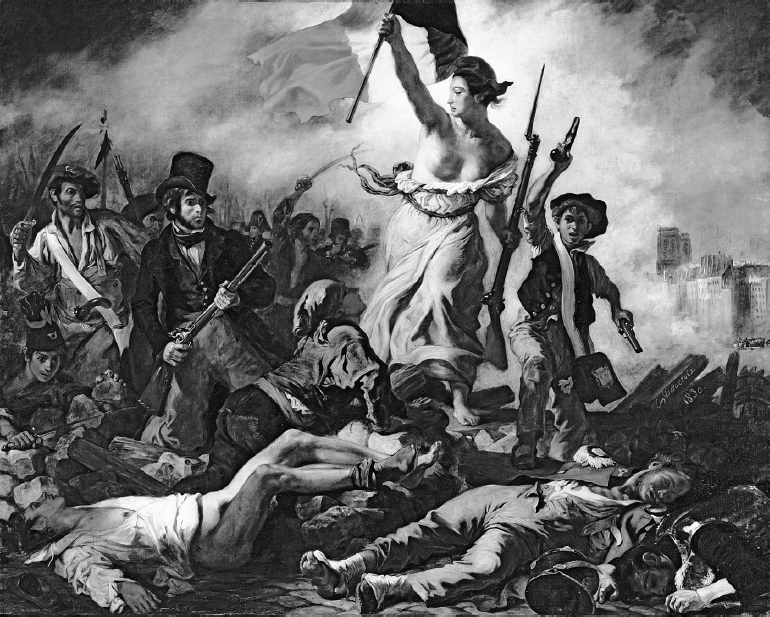Sources for Western Society: Printed Page 348
| 21-5 | | Following Mademoiselle Liberté |
| EUGÈNE DELACROIX, Liberty Leading the People (1830) |
Marianne, a female figure representing liberty and reason, became a central element in French political iconography during the French Revolution. From that point forward, French artists have used Marianne to connect the political events of their day to France’s revolutionary legacy, drawing on this powerful symbol of the promise of the revolution to give meaning to their own struggles. The work of French artist Eugène Delacroix (1798–1863) provides an example of this phenomenon. In 1830, with France once again convulsed by revolutionary upheaval, Delacroix placed Marianne in the thick of the Parisian street fighting, leading a crowd of revolutionaries forward over their fallen comrades, pointing the way toward the realization of France’s national destiny.

“28 July 1830,” Delacroix, Ferdinand Victor Eugene (1798–1863) / Louvre, Paris, France / The Bridgeman Art Library.
READING QUESTIONS
Question
What social classes are represented in the painting? What do they suggest about the political alliances that shaped the revolution of 1830?
Question
How might we interpret the fact that liberty is portrayed as a young woman? How might we react to the fact that her dress is torn to reveal her breasts?
Question
What does Delacroix’s painting suggest about the place of the French Revolution in French national identity in the early nineteenth century?